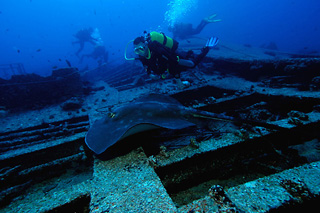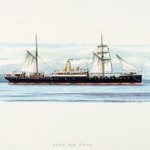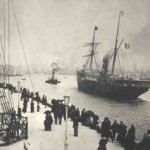VILLE OF PARÁ

Launched in 1882, the French transatlantic passenger and cargo steamer “Ville de Pará”, was making its third voyage from Havre to Pernambuco. At 8:00 a.m. on October 11, 1884, after running aground in Baja de Gando, her captain ordered the passengers and crew to be brought to safety, which was possible thanks to the fishermen in the area. After an hour has elapsed, the steamer, rising from the stern, instantly sinks into an immense whirlpool. On board it were seven paintings by the Brazilian painter and artist Benedicto Calixto, they were part of the decoration to set the steam rooms, which were never recovered from the shipwreck. The only known illustration of the Ville de Pará is a colored drawing by Pierre Paul Jean Bastide (1900-1983), which is part of the collections of the Musee National de la Marine, France (see images). It is not too frequented by sport divers. The sea conditions and the clash of the marine currents with the Gando submarine mountain, mean that the currents and eddies that are generated around the low make it difficult to anchor on the Villa. What makes it necessary to plan the diving in Baja de Gando, well in advance. At a depth of 40 meters, closed bottles of French wine are still preserved, and other signs of the passengers such as personal objects of different kinds, as well as everything related to the ship's dining room. The steam iron structures give shelter to a varied marine flora and fauna.
Various sources
LOCATION
Autonomous Community: Canary Islands
Provincia: Gran Canaria
Localidad: Bahía de Gando
REQUEST DETAILS
Apelativo: Villa de Pará
Año del hundimiento: 1884
Causas: Encallado
Año de construcción: 1882
Lugar: El Havre, Francia
Eslora: 90
Manga: 11
Profundidad media: 40



